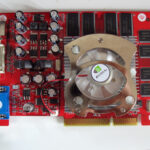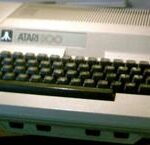You would not like your personal computer if it did not have buffering. Large computers back in the 1950’s and 1960’s did not do much with buffering. When cards were read in, you could watch them go in one at a time because the computer would not look for the next card until it finished with the first one.
The stack of cards in the reader acted as a buffer. A good operator could load cards much faster than an old IBM 360 could read them. So, part of the operator’s job was to keep the buffer full so that when the computer needed a card it did not have to wait for it. The technology to perform this has changed, but the idea is the same.
Whether your computer is downloading files, reading from a disk or jump drive, or sending information to your printer, buffers are employed to make these operations relatively smooth and seamless. Most buffers are electronic storage areas inside your computer’s ram although buffers can be in your input and output devices.
Running at billions of operations per second, your computer spends a lot of time waiting. It waits for you to type or click on an icon. It waits for a website to send requested information. The computer waits for its own hard drive to find files and information. Since all computers are designed to multi-task, buffers give computers a place to park data until it is needed. During this time, other programs or windows can use the computers resources to do more efficient things than wait.
When you open multiple internet sites, you give your computer the opportunity to show how good it is at using buffers. You see the little bar creeping across your browser as data trickles in from some website. To keep from just sitting and watching this slow process evolve, you open a new tab or browser window.
Soon, you have the same problem in the second window. Now, you can return to the first window to find that your computer has finished its work. While you read the material from the first website, your computer is busy collecting the new data from the second browser window. Internal buffers allow this to happen.
In the world that we all can see, buffers would look a lot like a line or a storage bin. When tickets to a major event are about to go on sale, people rush to buy them. Often long lines form hours or days before the doors open for the ticket sales. Although there is a line at the door, somewhere there are other people who are planning to buy a ticket that just have not made it to the door.
The people who run the ticket office want their sales people to stay busy selling tickets. When the doors open, the line starts to be serviced. At some point during the process, those people who were not yet in line start to show up at the end of the line. Now, you have a buffer. People are being processed at the front of the line, in the line people are waiting to get their turn, at the end of the line new people are coming to keep the line forming.
The sales clerks stay busy because as soon as one ticket is sold, someone steps forward to buy the next one. No one has to leave because the line gives them a place to wait until their turn comes. Assuming there is an endless supply of tickets and customers, the line can become a perpetual buffer.
This is exactly the way that your computer buffer does its job. It happens this way with both input and output. If the buffers are empty, the computer is not being efficient. If the buffers grow too large, you will complain about a slow computer and buy one with a faster processor and larger buffer space.


